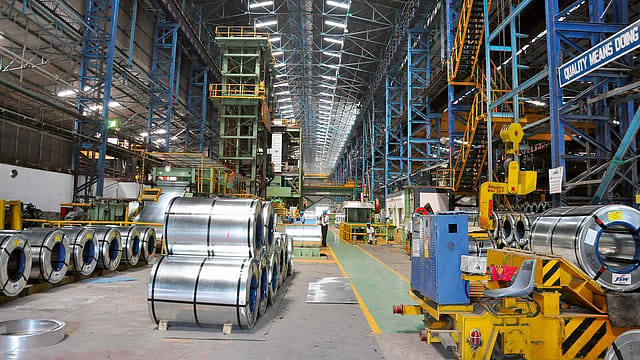India's industrial output grows to 4% in September; GST 2.0, manufacturing boost signal stronger months ahead
ADVERTISEMENT

India’s industrial output stood at 4% in September 2025, unchanged from August, driven by 4.8% growth in the manufacturing sector, according to data released on Tuesday by the Ministry of Statistics and Programme Implementation (MoSPI). The industrial growth in September, however, increased to 4% on year-on-year basis as compared with 3.2% in September 2024. Among the core sectors, electricity generation surged 3.1% while mining activity slipped 0.4% in September.
Highlighting key growth verticals in manufacturing, MoSPI said in the manufacturing sector, manufacture of basic metals at 12.3% and the manufacture of electrical equipment at 28.7% reported healthy growth.
Madan Sabnavis, Chief Economist at Bank of Baroda, said growth in September has been driven mainly by the manufacturing sector, which made up for the marginally negative growth rate of 0.4% in mining. "There has clearly been some pick up in the state of industry in September, with the last 10 days accounting for some part of this growth post rationalisation of GST. It may be expected that the next 3 months should be more buoyant for industry as the GST cuts would translate to higher demand which in turn should lead to increased activity in industry," said Sabnavis.
December 2025
The annual Fortune 500 India list, the definitive compendium of corporate performance, is out. This year, the cumulative revenue of the Fortune 500 India companies has breached $2 trillion for the first time. Plus, find out which are the Best B-schools in India.
Key Highlights:
The Quick Estimates of IIP stand at 152.8 against 146.9 in September 2024. The Indices of Industrial Production for the mining, manufacturing and electricity sectors are at 111.2, 154.3 and 213.3, respectively.
Within manufacturing, 13 out of 23 industry groups have recorded a positive growth YoY. The top three positive contributors are manufacture of basic metals (12.3%), manufacture of electrical equipment (28.7%) and manufacture of motor vehicles, trailers and semi-trailers (14.6%). The laggards included food, beverages, garments, chemicals and pharma among others. The tariff impact on garments looks discernible.
As per the use-based classification, the indices stand at 143.3 for primary goods, 122.0 for capital goods, 169.4 for intermediate goods and 197.6 for infrastructure/construction goods. Further, the indices for consumer durables and consumer non-durables stand at 146.5 and 141.5, respectively.
The corresponding growth rates of IIP as peruse-based classification in September 2025 are 1.4% in primary goods, 4.7% in capital goods, 5.3% in intermediate goods, 10.5% in infrastructure or construction goods, 10.2% in consumer durables and (-)2.9% in consumer non-durables.
Based on this classification, the top three positive contributors to the growth of IIP are infrastructure/construction goods, consumer durables and intermediate goods.
Manufacturing and consumer non-durables were the laggards in India’s slowed industrial output in August, economists said after India’s industrial output recorded a 4% increase year-on-year.
